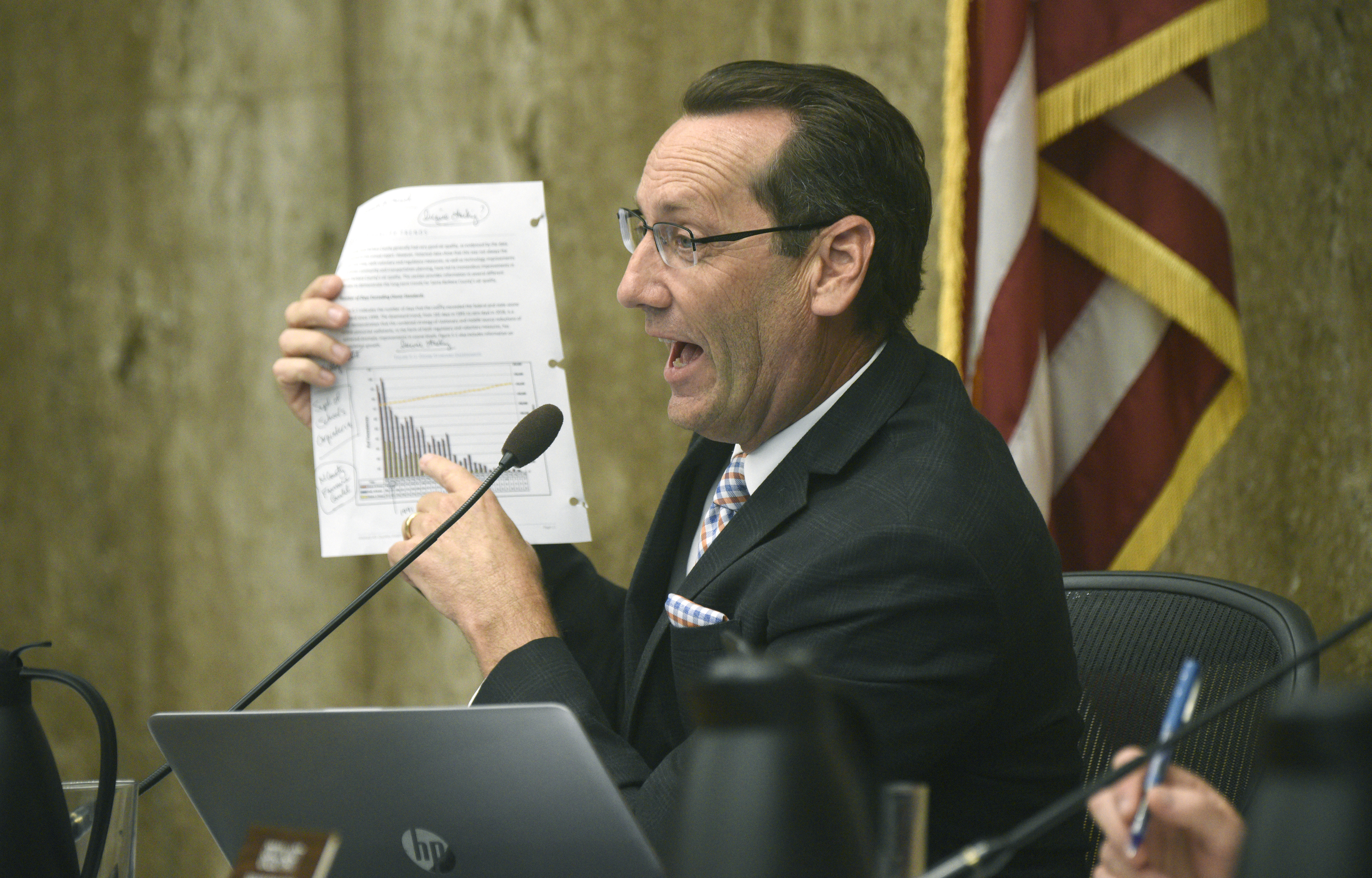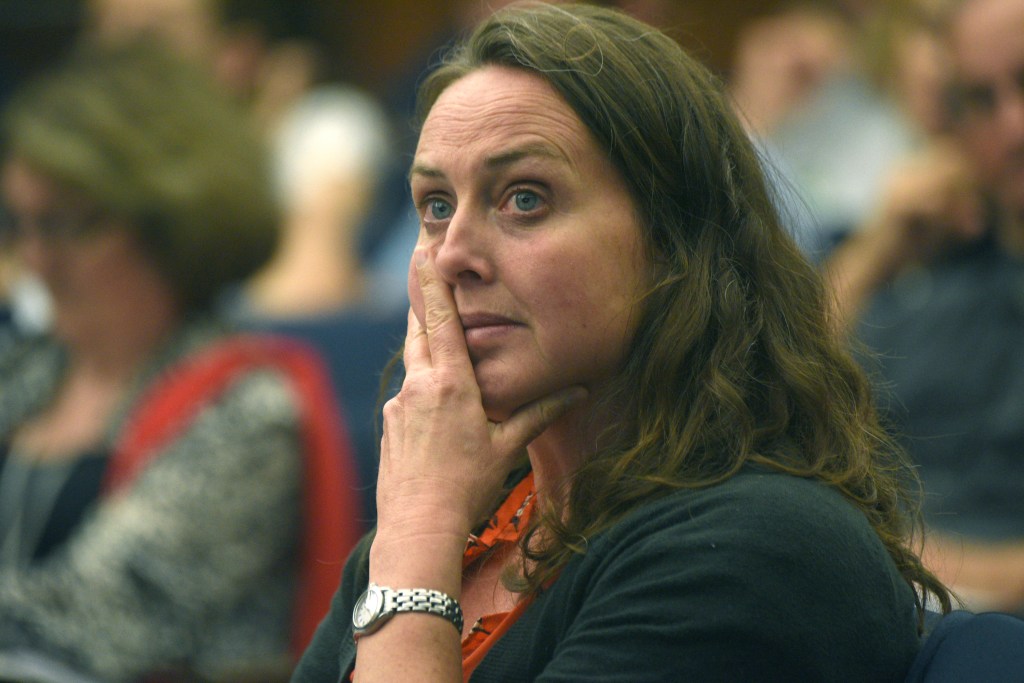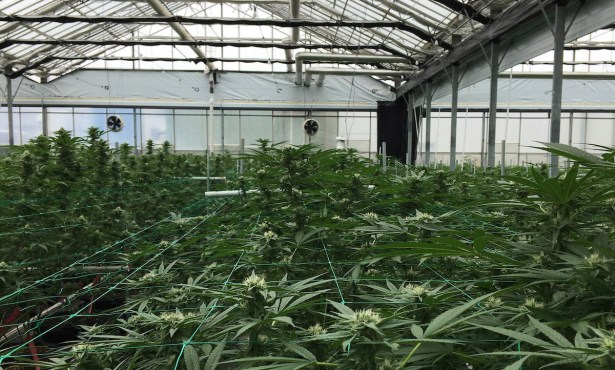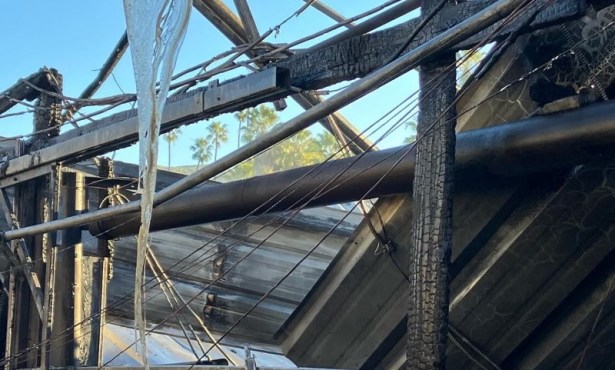Cannabis Critics Unanimously Shot Down
County Supervisors Deny Appeal to Send Plans for 350,000-Square-Foot Greenhouse Back to Drawing Board

Of all the dueling factoids unsheathed during the Board of Supervisors’ five-hour showdown over cannabis this Tuesday, perhaps the most jaw-dropping is that Santa Barbara County posted absolutely no violations of clean-air standards for ozone this past year. That hasn’t happened in 40 years. In 1991, by contrast, there were 101. This tidbit is generally important because ozone is better known as smog, suggesting that the skies over Santa Barbara have gotten significantly cleaner.
Critics of Santa Barbara’s burgeoning cannabis industry, including Maureen Claffey and Concerned Carpinterians, have charged that when oxides of nitrogen — aka NOx, a major component in the production of smog — combine in sunlight with terpenes — the odiferous compounds giving cannabis its signature skunk-like smell — they form what air-quality experts refer to as volatile organic compounds (VOCs), another smog precursor.
Claffey and crew showed up in significant numbers to object that this information was conspicuously lacking in the county’s Programmatic Environmental Impact Report (PEIR) relied upon by county planners and the Planning Commission when approving cannabis mogul Graham Farrar’s proposal to convert a 350,000-square-foot orchid greenhouse in Carpinteria into a massive hothouse for weed. Because of this and other omissions, Claffey argued, the supervisors needed to send Farrar and his greenhouse plans for 3561 Foothill Road back to the drawing boards. The supervisors not only disagreed with Claffey but did so unanimously.
In Santa Barbara’s ever-engulfing saga over the cultivation of sativas and indicas, this week’s confrontation marks the first time the supervisors have been forced to weigh in on any specific cannabis project. From the outset, Farrar’s proposal seemed a strategically questionable target. That’s in part because Farrar enjoys a reputation — even among industry skeptics and critics — for running a tight ship and jumping through all the hoops. As Farrar put it, he was asking only “to shift from one flower to another within an existing greenhouse infrastructure.” He’s proposing to recycle all water consumed and deploy insects in lieu of pesticides.
Still, Claffey persisted. The scion of a farming family who first moved to Carpinteria in 1860, Claffey said she’s now surrounded by three greenhouses. Their odors — intense and overwhelming at times, she’s complained — are masked by a nonstop mist of essential oils mixed with water shot into the air from pipes installed along the greenhouse eaves. What are the health implications of long-term exposure to such chemicals? she demanded.
Because the answer to that question wasn’t in the environmental report either, she argued, was yet another reason the supervisors should reject Farrar’s proposal. She has a 7-year-old daughter, Claffey told the supervisors; if they stay put, she objected, they’ll become human guinea pigs for an odor-control technology that may not work.
She also objected that the environmental report gave scant attention to conflicts cannabis production has caused with avocado ranching or wine-grape growing. By state law, cannabis exposed to even trace amounts of pesticides typically used on avocados must be destroyed. Because of this, pesticide sprayers can no longer get insurance coverage for what’s known as “pesticide drift.” As a result, avocado grower Sharyne Merritt was forced to use less-effective forms of pest control. Merritt testified she was losing $50,000 on this year’s crop.

Others complained that Carpinteria’s infamous weed odors haven’t abated. “It still stinks,” said one speaker. “A lot.” Supervisor Steve Lavagnino retorted he spent two days last week scouring the backroads of Carpinteria in search of the stench. Aside from a quarter-mile stretch of road, he said, he came up empty.
There was much illuminating discussion about the science underlying these debates. Based on an expert hired by Farrar, the odor-control system proposed for this greenhouse is 97 percent effective. None of the chemicals vaporized, individually, are toxic. And rats subjected to exposure for four hours do not get cancer.
But thanks to questions posed by Supervisor Peter Adam to a high-ranking health official, that information says nothing about the consequences of long-term exposure. About that, said the health official, there are simply no long-term studies.
Do cannabis terpenes mixed with the deodorizing chemicals create smog-inducing VOCs? According to William Vizuete, one of the nation’s leading experts on terpene pollution — also hired by Farrar to consult — that’s not likely. Vizuete testified cannabis terpenes would add only five tons to the 39,042 tons of naturally occurring terpenes currently “biogenically” generated from such plants as lemon and pine trees. As for long-term health consequences of the chemical soup used to control odors, another expert hired by Farrar, Nathan Eady, noted it was widely used by hospitals, which injected it in the HVAC (heating, ventilation, air conditioning) systems.
Supervisors Adam and Joan Hartmann remained alive to the potential health issues involved, though Adam suggested that was in the neighborhood of “infinitesimal.” Hartmann expressed solace that Farrar’s odor-control system would be tested by an independent subcontractor at least four times in the first year of operation. Summing up the supervisors’ sentiments, Adam addressed Farrar directly. “You’re the platinum standard now,” he stated. “If you turn it into a problem, this is going to be a wreck.”
Correction: Santa Barbara County achieved no violations of ozone, not NOx, for the first time in 40 years.




You must be logged in to post a comment.